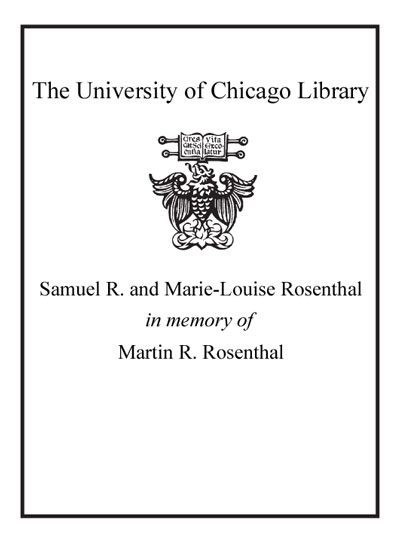Toward a unified criminology : integrating assumptions about crime, people and society /
Saved in:
| Author / Creator: | Agnew, Robert, 1953- |
|---|---|
| Imprint: | New York : New York University Press, c2011. |
| Description: | ix, 253 p. ; 23 cm. |
| Language: | English |
| Series: | New perspectives in crime, deviance, and law series New perspectives in crime, deviance, and law series. |
| Subject: | |
| Format: | Print Book |
| URL for this record: | http://pi.lib.uchicago.edu/1001/cat/bib/8849732 |
MARC
| LEADER | 00000cam a22000004a 4500 | ||
|---|---|---|---|
| 001 | 8849732 | ||
| 003 | ICU | ||
| 005 | 20130130131200.0 | ||
| 008 | 110712s2011 nyu b 001 0 eng | ||
| 010 | |a 2011028152 | ||
| 020 | |a 9780814705087 (hardback) | ||
| 020 | |a 0814705081 (hardback) | ||
| 020 | |a 9780814705094 (pb) | ||
| 020 | |a 081470509X (pb) | ||
| 020 | |a 9780814705278 (ebook) | ||
| 020 | |a 0814705278 (ebook) | ||
| 020 | |a 9780814707906 (ebook) | ||
| 020 | |a 0814707904 (ebook) | ||
| 035 | |a 8849732 | ||
| 035 | |a 2011028152 | ||
| 035 | |a (OCoLC)724667162 | ||
| 040 | |a DLC |b eng |c DLC |d BTCTA |d YDXCP |d BWX |d RCJ |d IAY |d CDX |d UtOrBLW | ||
| 042 | |a pcc | ||
| 082 | 0 | 0 | |a 364 |2 23 |
| 084 | |a SOC004000 |a SOC026000 |2 bisacsh | ||
| 090 | |a HV6025 |b .A38 2011 | ||
| 100 | 1 | |a Agnew, Robert, |d 1953- |0 http://id.loc.gov/authorities/names/n97048555 |1 http://viaf.org/viaf/42001926 | |
| 245 | 1 | 0 | |a Toward a unified criminology : |b integrating assumptions about crime, people and society / |c Robert Agnew. |
| 260 | |a New York : |b New York University Press, |c c2011. | ||
| 300 | |a ix, 253 p. ; |c 23 cm. | ||
| 336 | |a text |b txt |2 rdacontent |0 http://id.loc.gov/vocabulary/contentTypes/txt | ||
| 337 | |a unmediated |b n |2 rdamedia |0 http://id.loc.gov/vocabulary/mediaTypes/n | ||
| 338 | |a volume |b nc |2 rdacarrier |0 http://id.loc.gov/vocabulary/carriers/nc | ||
| 490 | 1 | |a New perspectives in crime, deviance, and law series | |
| 504 | |a Includes bibliographical references and index. | ||
| 505 | 0 | |a A divided criminology -- The scope of the discipline : what is crime? -- Determinism versus agency : is crime the result of forces beyond the individual's control or free choice? -- The nature of human nature : are people self-interested, socially concerned, or blank slates? -- The nature of society : is society characterized by consensus or conflict? -- The nature of reality : is there an objective reality that can be accurately measured? -- A unified criminology. | |
| 520 | |a "Why do people commit crimes? How do we control crime? The theories that criminologists use to answer these questions are built on a number of underlying assumptions, including those about the nature of crime, free will, human nature, and society. These assumptions have a fundamental impact on criminology: they largely determine what criminologists study, the causes they examine, the control strategies they recommend, and how they test their theories and evaluate crime-control strategies. In Toward a Unified Criminology, noted criminologist Robert Agnew provides a critical examination of these assumptions, drawing on a range of research and perspectives to argue that these assumptions are too restrictive, unduly limiting the types of "crime" that are explored, the causes that are considered, and the methods of data collection and analysis that are employed. As such, they undermine our ability to explain and control crime. Agnew then proposes an alternative set of assumptions, drawing heavily on both mainstream and critical theories of criminology, with the goal of laying the foundation for a unified criminology that is better able to explain a broader range of crimes"-- |c Provided by publisher. | ||
| 650 | 0 | |a Crime. |0 http://id.loc.gov/authorities/subjects/sh85033993 | |
| 650 | 0 | |a Criminologists. |0 http://id.loc.gov/authorities/subjects/sh85034103 | |
| 650 | 0 | |a Criminology. |0 http://id.loc.gov/authorities/subjects/sh89002994 | |
| 650 | 7 | |a SOCIAL SCIENCE / Criminology. |2 bisacsh | |
| 650 | 7 | |a SOCIAL SCIENCE / Sociology / General. |2 bisacsh | |
| 650 | 7 | |a Crime. |2 fast |0 http://id.worldcat.org/fast/fst00882984 | |
| 650 | 7 | |a Criminologists. |2 fast |0 http://id.worldcat.org/fast/fst00883564 | |
| 650 | 7 | |a Criminology. |2 fast |0 http://id.worldcat.org/fast/fst00883566 | |
| 830 | 0 | |a New perspectives in crime, deviance, and law series. |0 http://id.loc.gov/authorities/names/n2005033137 | |
| 903 | |a HeVa | ||
| 929 | |a cat | ||
| 999 | f | f | |i 426a08ca-0242-5b6c-91d3-237c38b2188d |s 7c122edd-6080-5b50-8705-f3976753fc35 |
| 928 | |t Library of Congress classification |a HV6025 .A38 2011 |l JRL |c JRL-Gen |i 1065427 | ||
| 927 | |t Library of Congress classification |a HV6025 .A38 2011 |l JRL |c JRL-Gen |e MARO |b 107042525 |i 9067213 | ||

